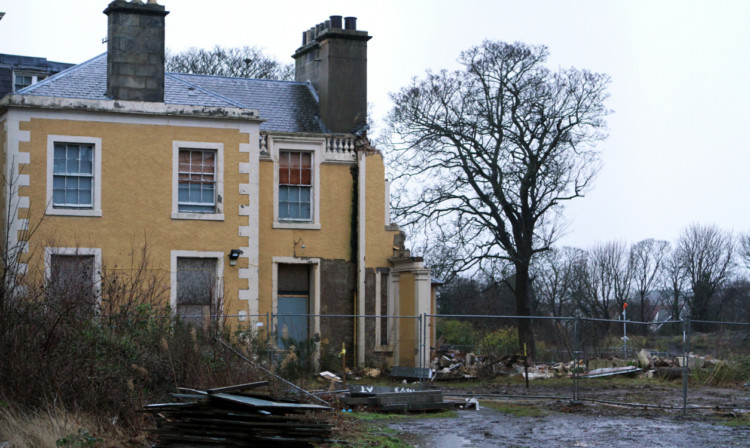Approval to demolish a category B-listed building in St Andrews was down to the design of the 200-year-old foundations and ground instability and not neglect, a Fife Council report says.
When councillors agreed with a council recommendation that the remains of Abbey Park House, pictured, should be demolished because it had fallen into such a state of disrepair, questions were asked as to how the scenario had arisen.
There was anger from councillors that the stone mansion house at St Leonards Fields had been allowed to get into such a state.
There were also questions raised as to what responsibility the owner, Robertson Homes, had to safeguard the former school building.
Now, in a report to Fife Council’s North East Fife planning committee, service manager Alastair Hamilton said there was no evidence of wilful neglect.
He said: “Since 2001 Abbey Park House has been the subject of various applications for planning and listed building consent. Both the owner of Abbey Park and Fife Council have been trying to find a use for the building.
“Despite the intention of all parties to ensure Abbey Park was retained, the unstable ground conditions meant the foundations of the building were compromised.
“This was to such an extent that the mitigation measures to secure the building were themselves likely to trigger a collapse, which effectively meant the loss of the building was inevitable.
“The demolition of the building is not, therefore, a result of neglect but the consequence of the decisions made regarding the design of the foundations at the time of the original construction and the inherent instability of the ground on which the property was built.
“It is apparent the foundations and ultimately, the building which they supported had a limited lifespan.
“Regrettably, at the point of works commencing to consolidate the building and secure it for redevelopment, the seriousness of the instability of the Georgian section was revealed.”
Demolition of the southern wing began on December 12 and there were concerns this could affect the structural integrity of the remainder of the building.
The demolition of the Regency wing had left the remainder of the building extremely vulnerable, along with the presence of severe timber rot.
